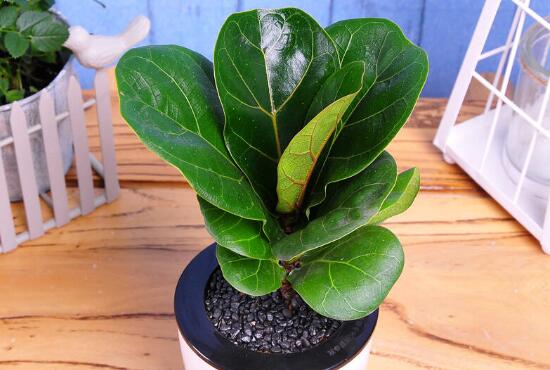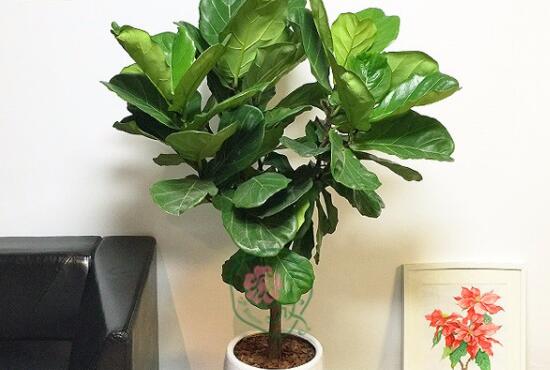Can banyan leaves be cultured in water? can banyan leaves be cultured in water / cut leaves in water?
As a common foliage plant, Qin leaf banyan is very effective, it is not only good-looking, can purify the air, but also can be used medicinally to treat diseases. Such plants are naturally raised at home by many people, but many flower lovers prefer water culture to soil cultivation. Can the fir leaf banyan be hydroponically cultivated? If so, what about the method of water culture of banyan? Let's go and have a look!
Can the banyan leaf be hydroponically cultivated?

Qin leaf banyan likes the wet environment, and its vitality is tenacious, even if a leaf, it can also survive by inserting it into the water. So can the fir leaves be hydroponically cultivated? Obviously, you can. As a matter of fact, a complete banyan leaf can also be grown by hydroponic culture of a small fir leaf. Of course, it's easy to say, but not easy to do. Let's move on to the details.
Second, the method of hydroponic culture of Ficus chinensis.
The main results are as follows: 1. Hydroponic culture of leaves cut off from figs.
If you want to talk about the hydroponic culture method of Qin-leaf banyan, the first step is to cut leaves: on the pot of Qin-leaf banyan, cut off the well-growing and full leaves, 1-2 leaves can be used. Clean the leaves, and if there are two, tie up their petioles for cutting.
2. Select containers
When it comes to hydroponics, you naturally have to choose a container. In order to facilitate the observation of the rooting of the banyan, we had better find a transparency bottle, small mouth is better, so that it can play the role of fixing the leaves.
3. Hydroponic culture begins
Insert the prepared banyan leaves into a transparent container and add clear water. Generally speaking, it is appropriate to add water just past the petiole, which is not suitable for too much. Remember to change the water for the plant regularly. After doing so, the banyan will take root in about 4 weeks.
4. The method of water culture of banyan.
① illumination
In the process of hydroponic cultivation, the banyan can be shaded at first, then slowly exposed to some low light, and finally exposed to natural light.
Note: although Qin leaf banyan likes light, its freshly hydroponic leaves are very fragile, so don't put them directly in the sun. Because slightly stronger light will make the leaves wilt quickly, florists should place glass containers in a semi-shady place.
② water exchange
In the banyan water culture method, one thing is very important, that is to change the water. If the external environment temperature is high, in order to prevent the water from deteriorating, it is necessary to change the water every 3 days or so; if the external temperature is low, change the water every 15 days or so. In addition, there is no need to add nutrient solution to the rooting process.
Can Qin leaf banyan be hydroponically cultivated? it is more effective to cultivate and watch it this way!
Characteristics of figs with piano leaves
Everyone says that if you understand it, you can conquer it better. It's not impossible to use this sentence in planting flowers. Only when you understand the characteristics of Qin Ye Banyan can you take care of it more perfectly in the future. Qin Ye Banyan is a kind of green plant. Usually, the requirement for soil growth is not very high, but looseness and ventilation is necessary. If possible, the soil with slightly fertilisation is the best. Maintain a certain degree of humidity in the air and carry out proper light treatment.
Is the banyan leaf suitable for hydroponic culture?
Of course, the answer is yes. in fact, it is not impossible to cultivate a whole banyan tree from a leaf of a fir. A banyan leaf can also grow a complete banyan by hydroponic culture.
The process of hydroponics
Pick the leaves of one or two fir leaves, tie their petioles together, find a transparent bottle and put a little water in it. Generally speaking, under the control of waterproof, it is appropriate not to pass the petiole, but not too much. Remember to change water for the plant. In this way, in the case of hydroponic culture, generally speaking, it can take four weeks to make it take root. It should be noted that in the process of hydroponics, do not expose it to bright light. To prevent direct sunlight exposure, the degree of exposure to sunlight should be controlled according to the degree of rooting and the quality of growth, and should not be carried out blindly. Generally speaking, it can be shaded at the beginning, and then slowly exposed to some weak light, and finally exposed to natural light.
Culture techniques of Ficus violaceus | Origin and habits | morphological characteristics | Management techniques
Culture techniques of Ficus chinensis | Origin and habits | morphological characteristics | Origin and habits of Management techniques:
Banyan originated from the moist forests of India and Malaysia, and then cultivated indoors in Southeast Asia, thus developing into today's indoor foliage plants. Qin leaf banyan likes high temperature and high humidity, which is generally higher than that required by other kinds of rubber trees, and can survive in the environment below 5 ℃ in winter.
Morphological features:
Banyan is a perennial evergreen tree with erect growth and few natural branches. The leaves are broad, violin-shaped, dark green, glossy and thick leathery. Leaves entire, undulating, veins sunken, leaves 25-38 cm long, 15 cm wide, apex dilated. Small black stipules shrink on leaf stem and have milk.
Culture techniques:
Leaf banyan striping and cuttings can be cultured, and striping culture is the most suitable method. Top branch or side branch can be selected, cuttings are no more than 3-4 leaves. In order to prevent the oozing of white pulp, the cut cuttings should be dipped with water or carbon powder. At the same time, sprinkle a little flour or charcoal powder on the cross section of the original plant. Cuttings can be rooting by water culture, and the fastest rooting can be achieved when the temperature is kept at 25-35 ℃.
Management technology:
From the opening of new leaves to the middle of August, fertilizer was applied every 10 days, mainly nitrogen fertilizer. When the growth is large, you can apply more fertilizer, stop growing or do not apply fertilizer when dormant. Select a basin with a larger volume, change the basin in spring every 2-3 years, cover the bottom of the basin with tiles with convex surface upward, first put it on a layer of old basin, and then add a new matrix made of pastoral soil, peat soil and a small amount of sandy soil. The soil should be slightly acidic.
The amount of water should depend on the temperature of the surrounding environment, the water demand in spring and summer is relatively large, and the amount of water should be reduced in the dormant period to keep the basin soil moist. Summer can properly shower light rain to facilitate growth, regular spraying of warm water, growth will be better, watering is also slightly acidic for better. Excessive temperature fluctuations or exposure to direct sunlight in the short term are not conducive to growth. If the plant is watered too much under low temperature for a long time, it can cause plant death.
- Prev

How to apply fertilizer to Banyan banyan? how often is it fertilized / once every 10 days in growing season
As a beautiful foliage plant, the leaves of figs are very large and evergreen all the year round. In order to maintain the beauty of its leaves, adequate nutrients are very important, so fertilization is a very key link in the process of cultivating figs. So how to fertilize the banyan leaves? How often is the banyan leaf fertilized?
- Next

How can the banyan leaf be tall and big, and the water should be bright enough / the temperature should be suitable?
As a common foliage plant, the cultivation method of fir is not difficult, and flower friends with a little experience of growing flowers can raise it well. However, although there is only an one-word difference between feeding and raising well, the difference is very big. Qin leaf banyan is beautiful with its big leaves, so how can Qin leaf banyan be tall and big?
Related
- Fuxing push coffee new agricultural production and marketing class: lack of small-scale processing plants
- Jujube rice field leisure farm deep ploughing Yilan for five years to create a space for organic food and play
- Nongyu Farm-A trial of organic papaya for brave women with advanced technology
- Four points for attention in the prevention and control of diseases and insect pests of edible fungi
- How to add nutrient solution to Edible Fungi
- Is there any good way to control edible fungus mites?
- Open Inoculation Technology of Edible Fungi
- Is there any clever way to use fertilizer for edible fungus in winter?
- What agents are used to kill the pathogens of edible fungi in the mushroom shed?
- Rapid drying of Edible Fungi

